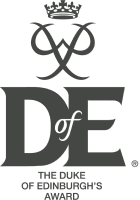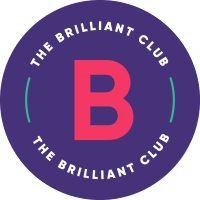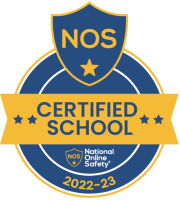This subject is part of the Faculty of Arts and Creative Technologies
Our Head of Faculty is
Mr R Down rdown@tcat.school
Our subject teacher and email address is
Mr R Down rdown@tcat.school
Our subject intent is
During this course you will learn how to work safely in areas of the construction industry and what legislation covers your work. You will learn how to compile risk assessments and identify hazards on work sites as well as what typical signs mean or require you to do. You will complete basic construction tasks including planning, using various sources of information and working out costs for your task. You will prepare an area for work, assemble the materials you require then demonstrate a high degree of skill in three assessed work areas such as carpentry, brick-laying, tiling or electrical installation. You will use CAD or other drawings and create your own drawings in response to specific briefs.
Curriculum Subject Offer
Year 10 Construction
Subject intent
During this course you will learn how to work safely in areas of the construction industry and what legislation covers your work. You will learn how to compile risk assessments and identify hazards on work sites as well as what typical signs mean or require you to do. You will complete basic construction tasks including planning, using various sources of information and working out costs for your task. You will prepare an area for work, assemble the materials you require then demonstrate a high degree of skill in three assessed work areas such as carpentry, brick-laying, tiling or electrical installation. You will use CAD or other drawings and create your own drawings in response to specific briefs.
In Key Stage 3 you learnt about designing and creating products for people to use by applying a variety of skills in working with wood, metal and plastic. You also learned about materials and mechanisms and developed practical skills in using tools and equipment safely.
Although this vocational course does not follow directly from KS3 DT, there are many transferrable skills and you will now build on the knowledge you have of materials and their uses.
During year 10 you will learn how to work safely in areas of the construction industry and what legislation covers your work. You will learn how to compile risk assessments and identify hazards on work sites as well as what typical signs mean or require you to do. You will complete basic construction tasks including planning, using various sources of information and working out costs for your task. You will prepare an area for work, assemble the materials you require then demonstrate a high degree of skill in three assessed work areas such as carpentry, brick-laying, tiling or electrical installation. You will use CAD or other drawings and create your own drawings in response to specific briefs.
Topic Breakdown
|
|
Half term 1 |
Half term 2 |
|
Autumn |
Introduction to construction sector Buildings and structures Infrastructure and civil engineering Building services engineering Roles and responsibilities in construction Practical skills 1 |
The built environment life cycle Raw material sources and extraction Manufacturing Building operation and maintenance Demolition & recycling Practical skills 1 |
| Spring |
Types of building structure Forms of low-rise building Technologies & Materials Practical skills 2 |
Materials used in construction and building services Materials used in roofs and interiors Practical skills 2 |
|
Summer |
Structures and forms Cellular constructions Heritage and traditional methods Practical skills 3 |
Sustainable construction Pollution and the natural environment Sustainable materials Waste disposal & re-use Practical skills 3 |
You will be assessed through regular tests to check subject knowledge and ability in the skills necessary for the final exam.
Construction full Scheme of Work - Year 10
Year 11 Construction
Subject intent
During this course you will learn how to work safely in areas of the construction industry and what legislation covers your work. You will learn how to compile risk assessments and identify hazards on work sites as well as what typical signs mean or require you to do. You will complete basic construction tasks including planning, using various sources of information and working out costs for your task. You will prepare an area for work, assemble the materials you require then demonstrate a high degree of skill in three assessed work areas such as carpentry, brick-laying, tiling or electrical installation. You will use CAD or other drawings and create your own drawings in response to specific briefs.
In year 10 you learnt about health & safety and security in construction. You learned practical skills such as carpentry, tiling, decorating or brick-laying. You learned how to record your progress in a suitable format for assessment including calculations of costs and quantities of material required for various construction tasks. You learned about the sequence of processes involved in building a house and some of the trades involved.
During Year 11 you will work towards your final assessment including demonstrating the application of construction skills and recording your work in a portfolio. You will evaluate your work and make changes as necessary. You will prepare for the final exam including revising subject knowledge and understanding.
Topic Breakdown
|
Half term 1 |
Half term 2 |
|
|
Autumn |
Final application of practical skill 1
Writing up of portfolio Final application of practical skill 2 Writing up of portfolio |
Final application of practical skill 3
Writing up of portfolio Potential inclusion of 4th skill (best 3 chosen for final submission) |
|
Spring |
Pre public examinations
Continuation of skill 4 (or completion of other work as required) Portfolio development |
Revision in preparation for final exam series. |
|
Summer |
n/a | n/a |
You will be assessed through a final formal exam and by submitting a portfolio of work including photographic evidence of the skills you have learned and applied.
Construction full Scheme of Work - Year 11
Within each subject we have our own specific personalised marking and feeback policy.
|
Arts and Creative Technology |
||
|
|
KS3 |
KS4 |
|
Verbal dialogue |
Teachers circulate with purpose, checking pupils’ work and collecting information on whole-class strengths, skill development, errors, misconceptions, knowledge gaps etc. The teacher adjusts their lesson accordingly. |
Teachers circulate with purpose, checking pupils’ work, providing feedback if appropriate and collecting information on whole-class strengths, errors, misconceptions, knowledge gaps etc. The teacher adjusts their lesson (or SOW) accordingly. |
|
Self/peer assessment |
Verbal or written feedback through strengths/targets and annotations. If written, peer and self-assessment should be completed in blue pen. |
Verbal or written feedback through strengths/targets and annotations. If written, peer and self-assessment should be completed in blue pen. |
|
Whole Class Feedback |
When pupils complete extended pieces of work, teachers will look through a sample of work from each class they teach and note pupils’ strengths and targets. Teachers will then use this information to provide whole class feedback on what pupils are doing well and how pupils can improve their work further. As this type of marking involves the teacher looking at a sample of work, the teacher will use a rotation system to ensure that the work of all pupils is looked at on a regular basis. Where books are not used, verbal responses from pupils or video evidence can be used. |
When pupils complete extended pieces of writing, teachers will read through a sample of books from each class they teach and note pupils’ strengths and targets. Teachers will then use this information to provide whole class feedback on what pupils are doing well and how pupils can improve their work further. As this type of marking involves the teacher looking at a sample of books, the teacher will use a rotation system to ensure that the books of all pupils are looked at on a regular basis. Where books are not used, verbal responses from pupils or video evidence can be used. |
|
Written comments |
Teachers within the department will either: 1. Check through the work of all pupils and use a marking code to indicate the strengths and targets of the work. The marking code will be shared with all pupils and pupils will be given precise instruction about how to improve their work. OR 2. Read through the work of all pupils and write a strength comment and target comment at the end of the piece of work. OR 3. Record evidence of work through suitable media, providing pupils with a strength and target comment relevant to the piece of work. SPAG Teachers will identify where pupils make errors in their spelling, punctuation and grammar and pupils will be given time in lessons to make corrections (by circling errors where SPAG mistakes appear). If several pupils in a class are making the same spelling, punctuation or grammar error then the teacher will address this with the class. |
Teachers within the department will either: 1. Read through the work of all pupils and use a marking code to indicate the strengths and targets of the work. The marking code will be shared with all pupils and pupils will be given precise instruction about how to improve their work. OR 2. Read through the work of all pupils and write a strength comment and target comment at the end of the piece of work. OR 3. Record evidence of work through suitable media, providing pupils with a strength and target comment relevant to the piece of work.
SPAG Teachers will identify where pupils make errors in their spelling, punctuation and grammar and pupils will be given time in lessons to make corrections (by circling errors where SPAG mistakes appear). If several pupils in a class are making the same spelling, punctuation or grammar error then the teacher will address this with the class.
Written feedback forms part of the module feedback process in vocational courses. This is intended to be summative for that unit/module but formative toward improvement in the following unit/module. |
|
Frequency of feedback |
Live feedback and responsive teaching will take place in most lessons where pupils have been asked to complete extended pieces of work. * Whole-class feedback will take place once a week. Peer/self-assessment When deemed to be the most effective method of assessing work produced in lessons Written comments will take place after between 10 and 15 lessons (around twice per term), as appropriate for the pace of the class. OR Once per module/rotation.
|
Live feedback and responsive teaching will take place in most lessons where pupils have been asked to complete extended pieces of writing. * Whole-class feedback will take place once a week. Peer/self-assessment When deemed to be the most effective method of assessing work produced in lessons Written comments will take place after between 10 and 15 lessons (around twice per term), as appropriate for the pace of the class. There may be several lessons where pupils do not write extensively. Instead lesson time will be used to: (for example) read and discuss the musical scores; annotate the text/diagrams; make notes about the set-works; complete short comprehension activities. |
|
Response to feedback |
When directed after marking/whole class feedback, pupils will be expected to make a response in blue pen OR Make media application of their feedback in their ongoing work. In some instances, pupils will be expected to put the title DIRT and either re-draft an entire piece of work or a section of the piece of work according to the teacher’s instructions. In other instances, pupils will be expected to apply their feedback in the form of transferable skills applied in a new task. This would be done in blue pen when relevant. In further instances, pupils may be asked to answer questions posed by the teacher. Responses to spelling mistakes include writing out misspelled words such as subject specific vocabulary or key words. |
When directed after marking/whole class feedback, pupils will be expected to make a response in blue pen OR Make media application of their feedback in their ongoing work. In some instances, pupils will be expected to put the title DIRT and either re-draft an entire piece of work or a section of the piece of work according to the teacher’s instructions. In other instances, pupils will be expected to apply their feedback in the form of transferable skills applied in a new task. This would be done in blue pen when relevant. In further instances, pupils may be asked to answer questions posed by the teacher. Responses to spelling mistakes include writing out misspelled words and listening to explicit teaching of spelling (etymology etc.). |
|
Summative assessment |
1 x formal assessment each half term or module rotation. A piece of extended work which is marked using comparative judgement on the No More Marking platform. Band boundaries are applied to the assessments once judged, as stated in the SOW. |
1 x formal assessment each half term. A piece of extended writing which is marked using comparative judgement on the No More Marking platform. Band boundaries are applied to the assessments once judged. This might be a practical piece or some written work, as stated in the SOW. |






